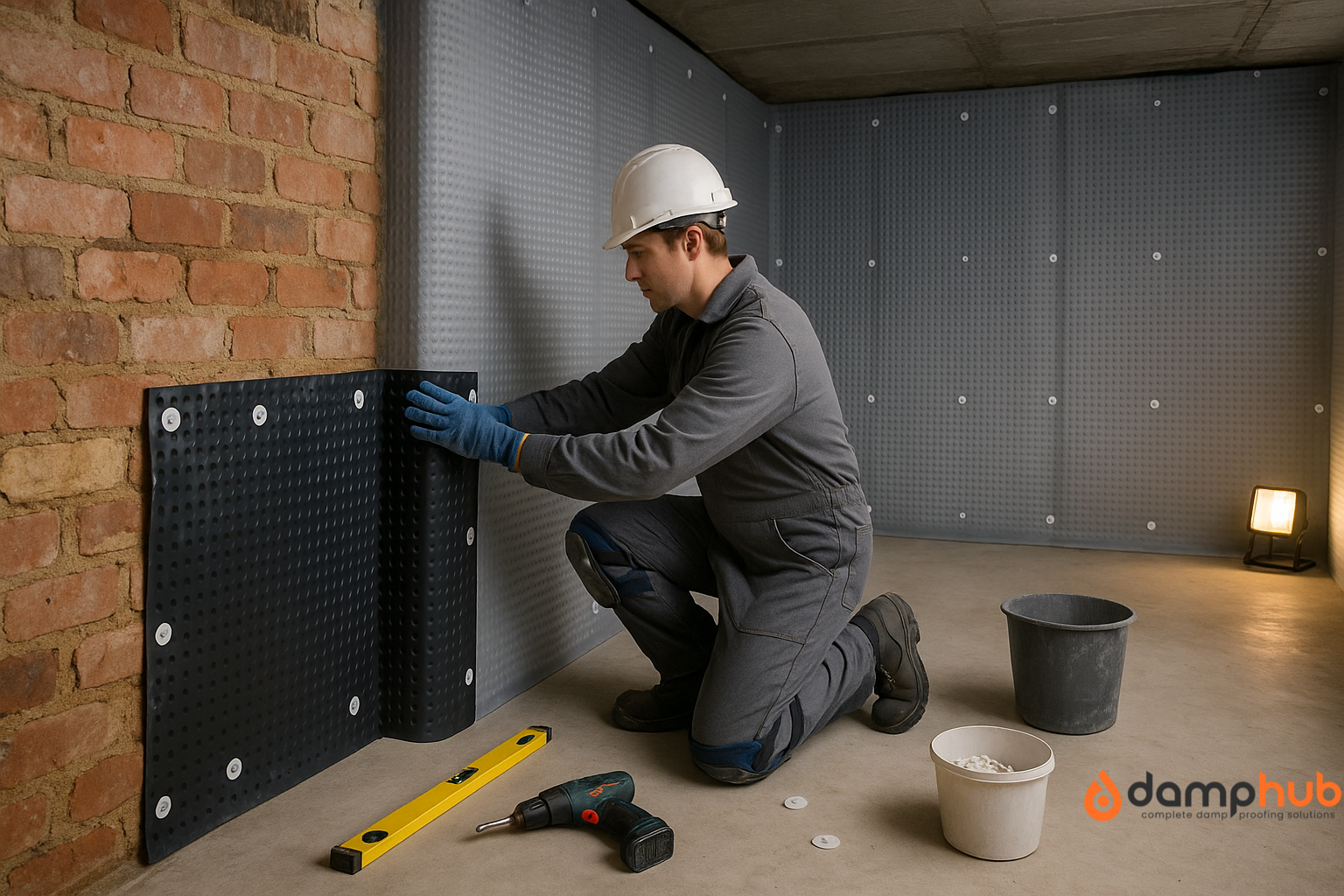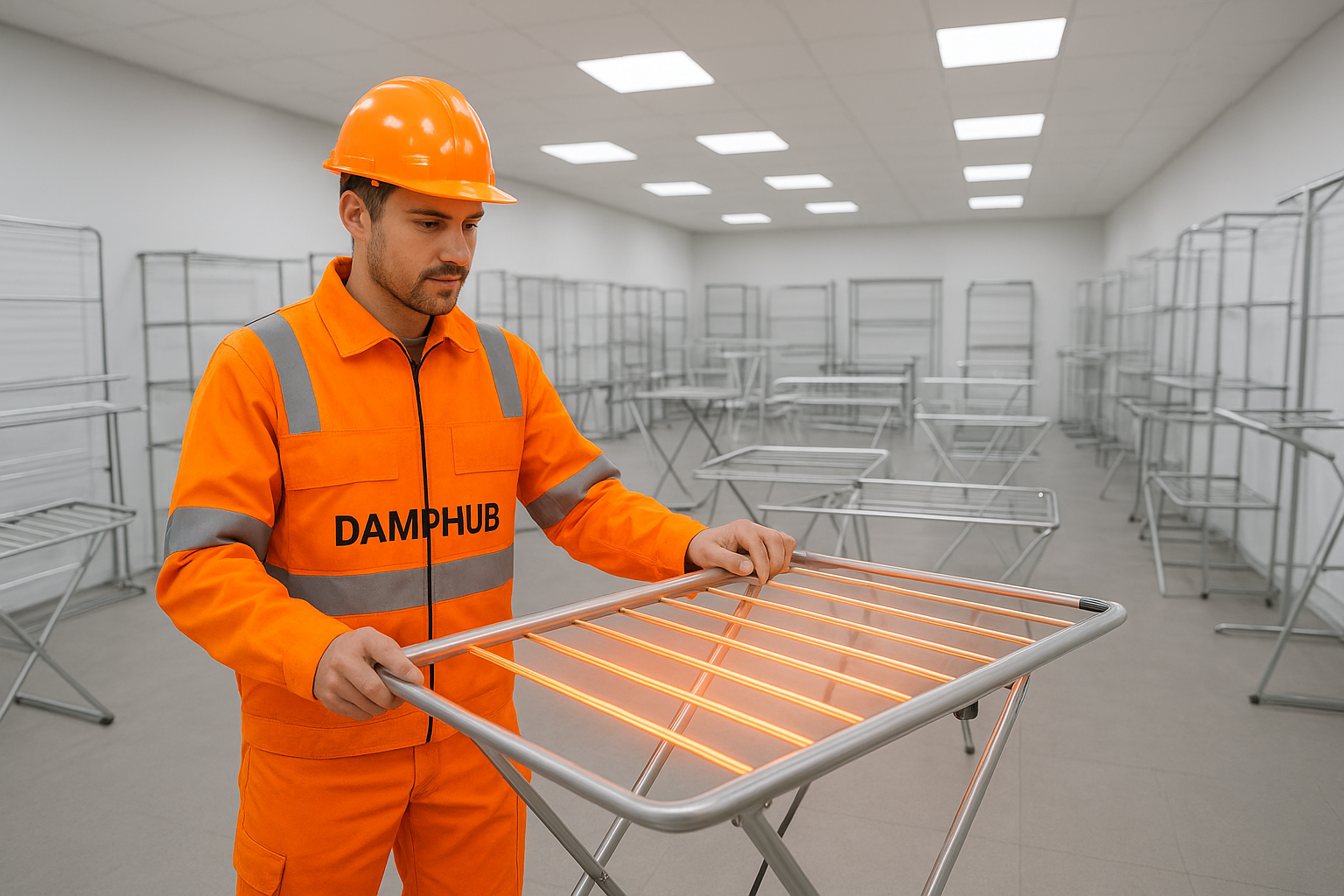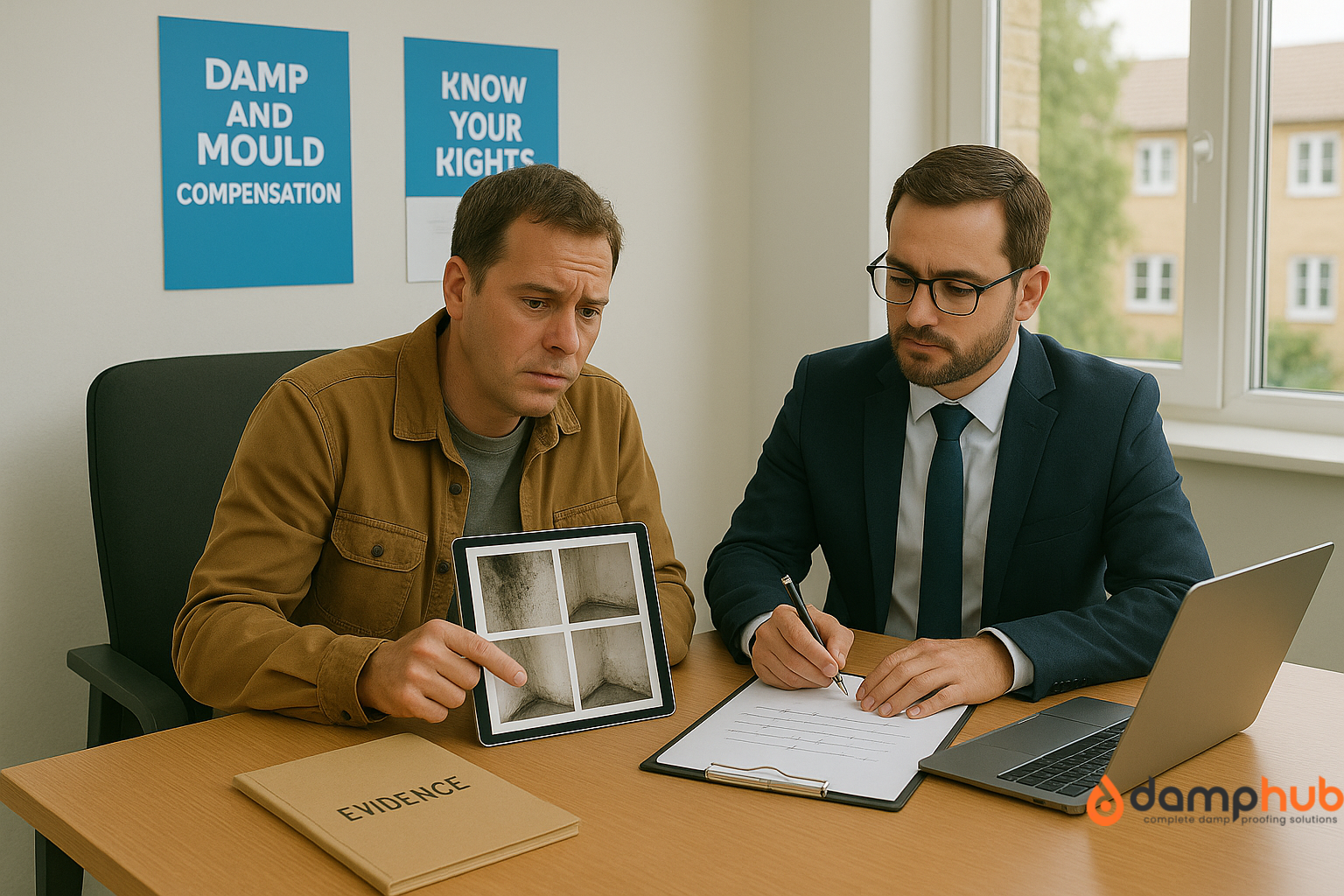
Concrete’s meant to be tough. That’s why we pour it into driveways, foundations, garden steps—anywhere you want something to last.
So when it starts cracking, flaking, or breaking away in chunks, it’s not just something you can take for granted. It’s the start of something serious.
Crumbling concrete isn’t about “old age” or wear and tear. It’s a sign that something went wrong—inside the mix, below the surface, or around the edges. And if you leave it, the damage only spreads.
But why is your concrete crumbling?
Here’s what’s really happening underneath, what to look out for, and how to fix (and prevent) the mess before it turns into structural damage.
Why Is Your Concrete Crumbling?
Concrete doesn’t crumble without a reason. It’s usually a mix of three things: water, bad materials, and ignored problems.
Here’s where it goes wrong.
Freeze-Thaw Damage
It’s always the same story. A tiny bit of water sneaks in through a small crack or porous patch. Then winter hits. That water freezes and expands, slowly splitting the surface apart from within.
Every freeze-thaw cycle pulls the surface a little looser. First, it flakes. Then it pits. Eventually, chunks come off, especially on steps, patios, and garden slabs.
❄️ Pro Tip
Live somewhere frosty? Use a breathable sealer before winter. It keeps water out without trapping moisture inside the concrete.
Weak Concrete Mix
This one’s all about the original pour. If the concrete was mixed badly—too much water, not enough cement, or just plain rushed—it was doomed from day one.
You end up with concrete that’s too porous, too soft, or full of air pockets. And once water, frost, or pressure hit it, things start falling apart.
🛑 What to Avoid
Adding extra water to make concrete “easier” to pour? Big mistake. It might spread smoothly, but it dries weakly and cracks early.
Rusting Rebar (Hidden Killer)
If your concrete has steel inside it (most modern structures do), moisture is its worst enemy. Water sneaks in, reaches the rebar, and starts rusting it.
Here’s the twist: rust expands up to six times the volume of the original steel. That puts pressure inside the concrete. It cracks from the inside out.
Rust doesn’t stay hidden either. You’ll see:
- Orange-brown streaks on the surface
- Cracks radiating from corners or joints
- Pieces flaking off, revealing corroded steel
🔎 Good to Know
By the time rust is visible, the steel inside has probably been corroding for months—or longer.
Water Ingress (Silent Concrete Killer)
Moisture doesn’t just show up in floods. It creeps. Through cracks, through gaps, through microscopic holes in the surface. Especially on flat areas like steps or basement floors.
Over time, water ingress breaks down the bond between particles, wears out the cement, and leaves you with concrete that turns to dust under pressure.
📍 What to Do
If your basement floor or garden wall is constantly damp, get a proper damp survey. Water and concrete don’t get along, and small leaks turn into structural problems fast.
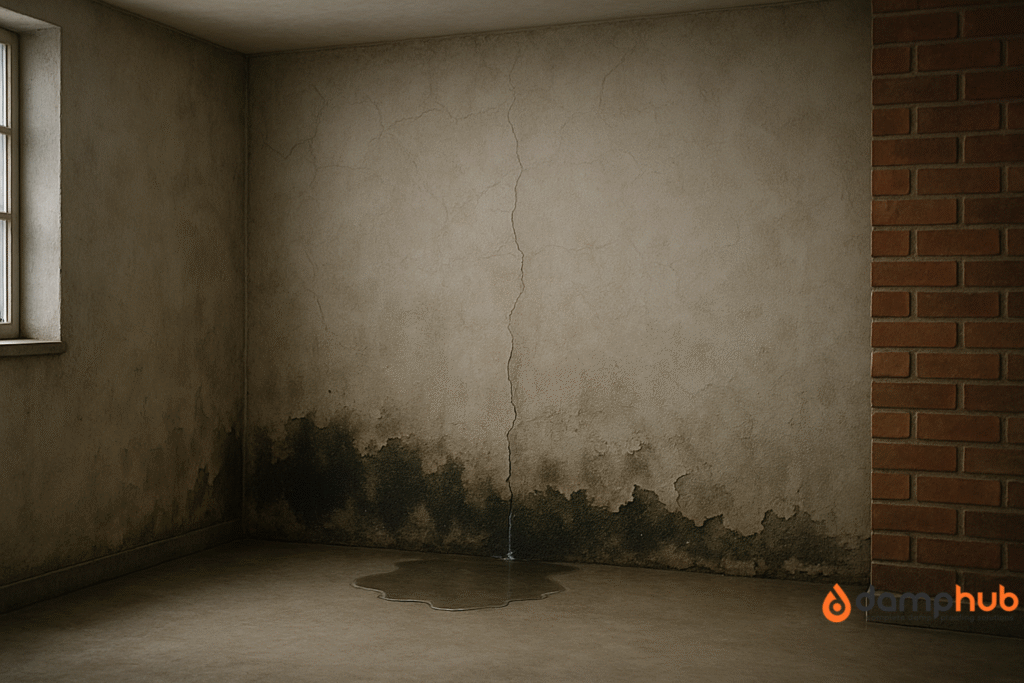
Chemical Attack
Salt, cleaning products, acidic rain, and oil spills—all of them eat away at concrete slowly and quietly. They react with the cement inside, weakening the structure from within.
Driveways, garages, car parks, and garden paths take the brunt here, anywhere exposed to de-icers or harsh cleaners.
🧪 Pro Tip
If you use de-icer in winter, switch to sand or grit. It’ll stop slips without wrecking your driveway over time.
Time and Neglect
Yes, concrete gets tired. Sun, rain, frost, foot traffic—it all adds up. But age alone isn’t what makes it fail. It’s the lack of upkeep.
Old concrete that’s never been sealed, patched, or inspected becomes brittle. Cracks form. Edges crumble. The surface wears thin.
📅 Good to Know
Check the outdoor concrete every spring. Clean it. Look for cracks. Reseal if needed. It’s way cheaper than tearing it all up and starting again.
👉 Related Blog: Dry Rot on Walls: Causes, Signs, and Expert Treatment Advice
Early Warning Signs of Crumbling Concrete
Crumbling doesn’t happen overnight. If you catch it early, you can stop it from turning into a rebuild job.
Here’s what to look for:
- Surface flaking or peeling (especially where water pools)
- Cracks that grow or branch out
- Rust stains (usually mean corroding steel inside)
- Hollow sounds when tapped—like a shell
- Powdery residue (efflorescence)
- Loose grit or chunks breaking away underfoot
🧱 Pro Tip
Tap a few spots with a hammer. A sharp, solid sound means it’s still good. A dull thud? That layer’s probably detaching from below.
Why Is Your Concrete Crumbling? How to Fix It
There’s no one-size-fits-all fix. Light surface damage? Patch it. Rebar corrosion or deep cracks? That’s a whole different job.
Surface Repairs (Light Damage)
If the damage is cosmetic—not structural—you can usually repair it yourself:
- Clean the surface (use a stiff brush or pressure washer)
- Chip away loose or flaking bits
- Apply bonding primer
- Use patching compound or repair mortar
- Smooth and allow it to fully cure
- Seal the surface with a breathable waterproof sealer
🔨 Pro Tip
Wet the surface slightly before applying fresh mortar—it helps the new layer grip better.
Deeper Repairs (Structural or Rust-Related)
If you see rusting steel, deep cracks, or the concrete coming off in layers:
- Expose the damaged section completely
- Clean rebar with a wire brush
- Apply rust inhibitor
- Rebuild with structural-grade mortar
- Add extra mesh or steel if needed
- Cure properly before applying weight
🏗️ Warning
If it’s a load-bearing wall or slab, don’t wing it. Call a structural engineer before touching anything.
Waterproof It Afterward
No repair lasts if water keeps getting in. Once the patchwork’s done:
- Apply breathable concrete sealers
- Fix nearby drainage issues (gutters, downpipes, slope)
- Add basement tanking if it’s a basement wall or below-ground slab
- Reseal every few years, especially outdoor areas
💧 What to Avoid
Avoid sealants that trap water. Concrete needs to “breathe”—especially in older homes.

How to Stop Concrete From Crumbling in the First Place
Preventing damage is cheaper and easier than repairing it. These steps make concrete last longer:
Use the Right Mix
Whether you’re DIY-ing or hiring someone, start with a proper mix:
- Stick to the correct cement/water ratios
- Use clean aggregates
- Don’t skimp on curing time
- Never pour on a freezing day
🎯 Pro Tip
Quick jobs fail faster. If you’re rushing, you’re not doing it right.
Seal Surfaces (Regularly)
Concrete isn’t waterproof by default. Seal exposed surfaces every 2–3 years:
- Use breathable sealers for patios and driveways
- Avoid glossy finishes that peel
- Clean the surface before sealing
🧴 Good to Know
Seal on dry, mild days—not when rain’s coming or temperatures drop below 5°C.
👉Read more: How to Cure Rising Damp in an Old House
Fix Water Problems Around the Area
- Slope paths and patios away from walls
- Keep gutters and downpipes clear
- Extend drainpipes away from foundations
- Use French drains or gravel strips in wet zones
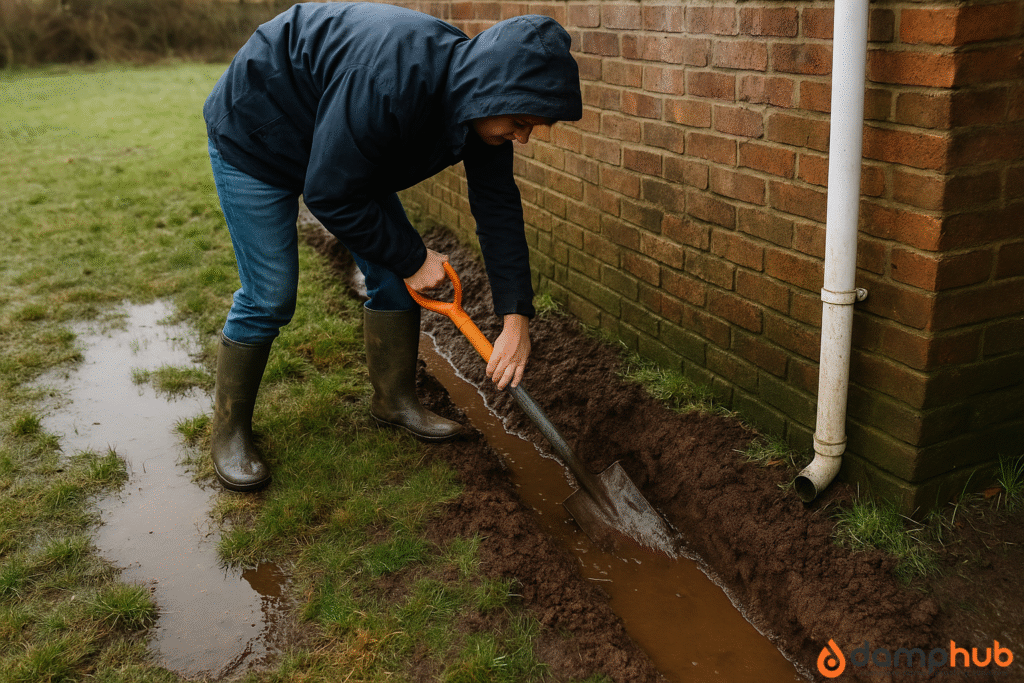
Inspect Twice a Year
Spring and autumn—same as roof checks. Look for:
- New cracks
- Crumbling spots
- Damp patches
- Surface wear
Fixing small issues early saves you from costly repairs later.
Limit Chemical Exposure
Salt, bleach, and cheap cleaners will break down concrete slowly.
- Use sand or grit in winter
- Rinse the concrete after oil or chemical spills
- Avoid strong acids or alkaline cleaners
Final Thoughts: Why is Your Concrete Crumbling?
Crumbling concrete isn’t just ugly—it’s your home telling you something’s wrong. The longer you ignore it, the more expensive and dangerous it gets.
Patch the small stuff. Call a pro for the serious bits. Keep it sealed. Keep water out. And do the basic checks before things fall apart.
Because concrete’s supposed to last. And if it’s crumbling already, something needs fixing.
Why is Your Concrete Crumbling? Answering Common Questions
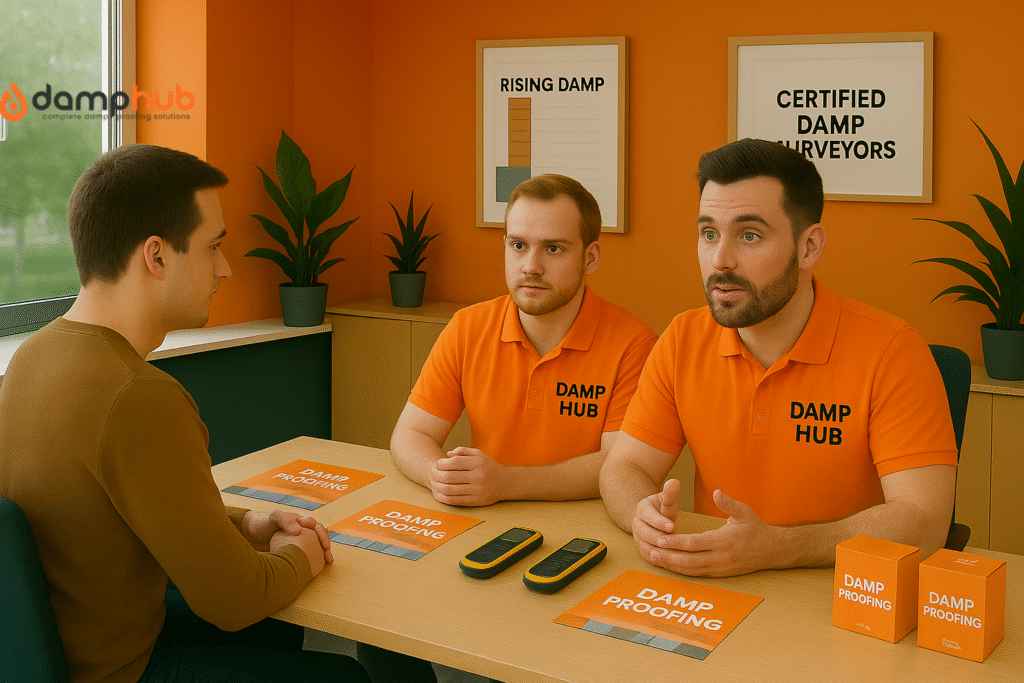
Why is new concrete crumbling?
New concrete can crumble if it was poorly mixed, dried out too quickly, or not properly cured.
Common causes include too much water in the mix, low cement content, improper finishing, or exposure to rain or frost before the concrete sets.
Why is my concrete still soft after 4 days?
Concrete that’s still soft after 4 days may be curing slowly due to cool temperatures, excess water in the mix, or insufficient cement content.
It could also signal improper mixing or premature loading. Normally, concrete begins to harden within 24–48 hours and continues to gain strength over several weeks.
What happens if it rains while concrete is curing?
Rain can wash out the cement paste from the surface of freshly poured concrete, weakening it and causing dusting, scaling, or surface crumbling.
If concrete has already started to set, light rain may not cause significant damage, but early exposure can seriously affect the final strength and finish.
Can I walk on concrete after 4 hours?
Generally, no. Most concrete is not ready for foot traffic after just 4 hours.
It usually takes 24 to 48 hours to be walkable without causing surface damage.
Walking on it too soon can leave footprints or disrupt the finish.
What is the formula for the ratio of 1:2:3 concrete mix?
The 1:2:3 mix ratio refers to 1 part cement, 2 parts sand, and 3 parts coarse aggregate (gravel) by volume.
Water is added separately and typically ranges from 0.4 to 0.6 parts water per part cement, depending on the desired workability and strength.
What does crumbling concrete look like?
Crumbling concrete often shows signs like flaking, chipping, or surface erosion. You may see loose particles, rough patches, or exposed aggregate.
In severe cases, it can resemble broken cake crust or have deeper cracks and spalling.
Can you paint crumbling concrete?
Painting crumbling concrete is not recommended without repair.
The surface must first be cleaned, stabilised, and patched using a suitable concrete repair compound.
Painting over damaged concrete without prep will lead to peeling and poor adhesion.


